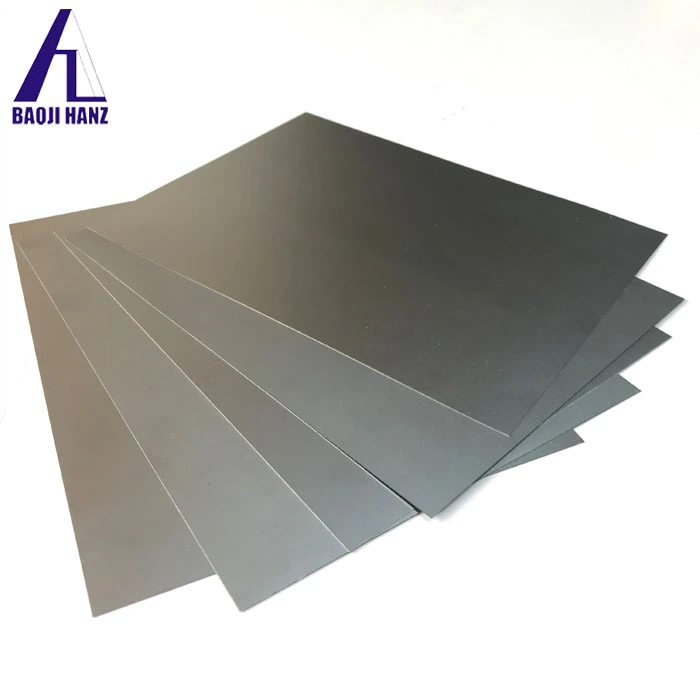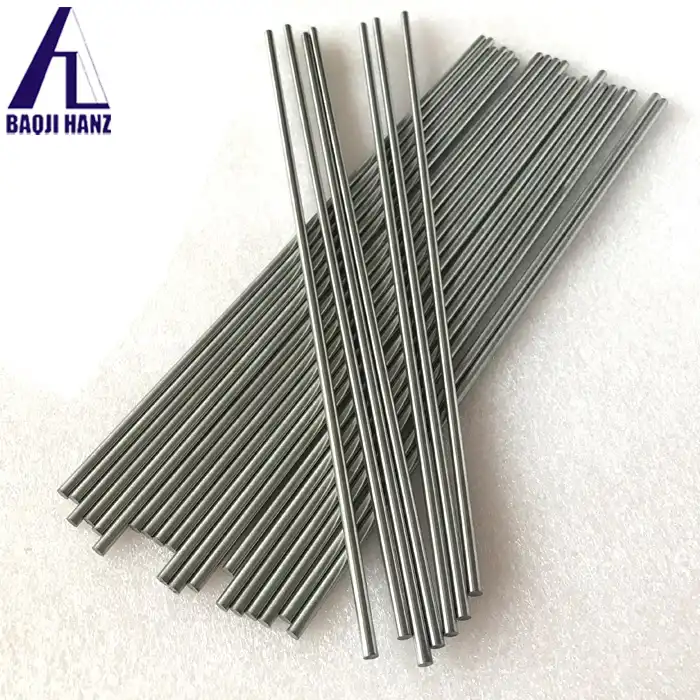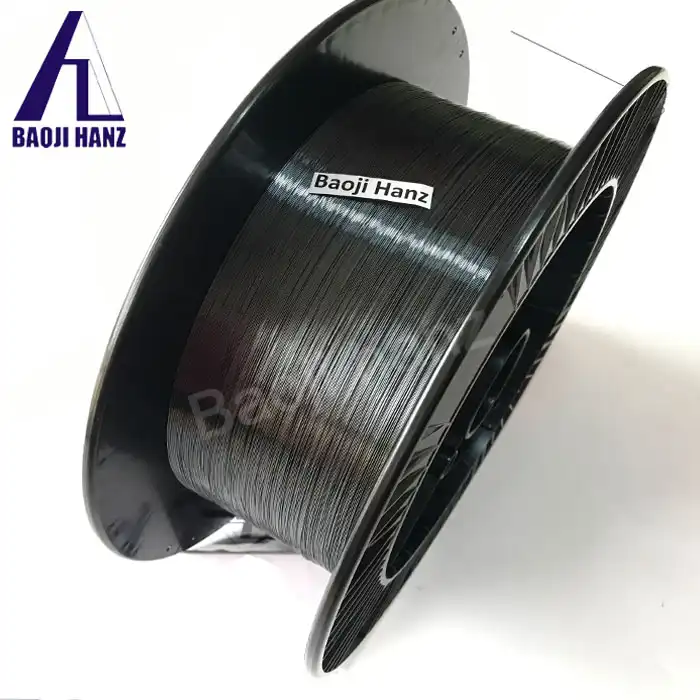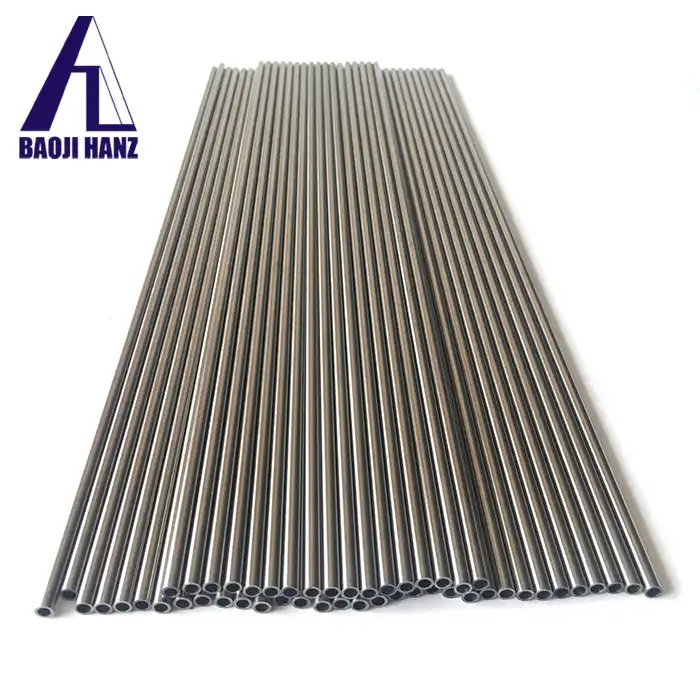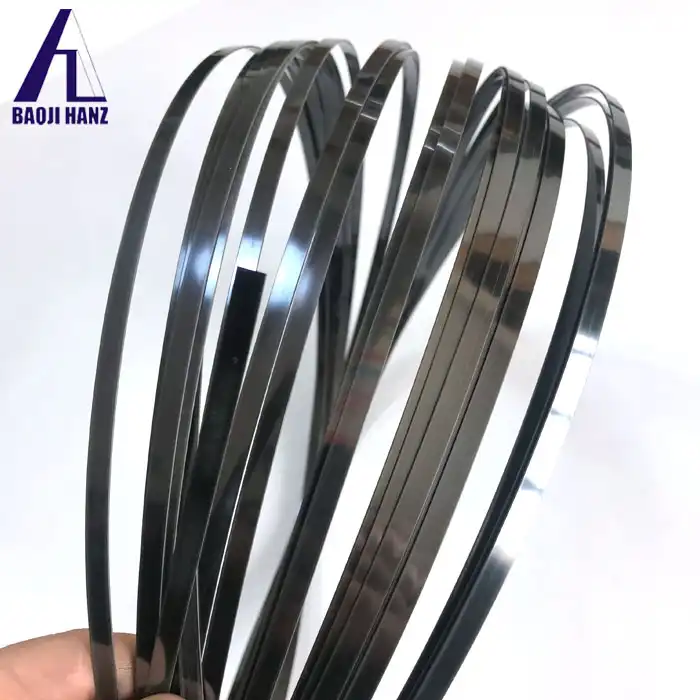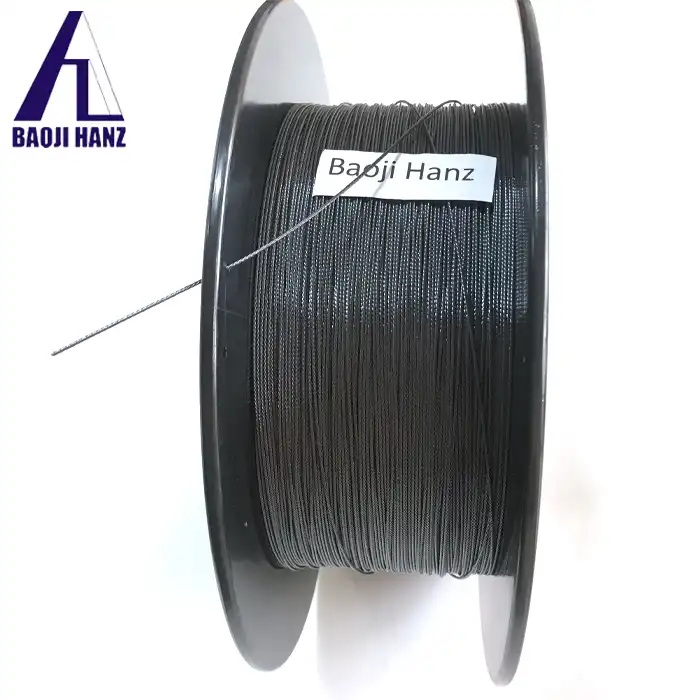How Does Nitinol's High Strength-to-Weight Ratio Benefit Your Projects?
2025-04-17 20:31:33
In the realm of advanced materials engineering, few innovations offer the remarkable combination of properties found in Nitinol. The exceptional high strength-to-weight ratio of this unique alloy has revolutionized numerous industries by enabling designs that were previously impossible. Memory shape titanium nickel rope, a specialized form of Nitinol, exemplifies these benefits through its ability to withstand substantial loads while maintaining minimal weight. This powerful combination creates unprecedented opportunities for engineers, designers, and manufacturers across multiple sectors. As we explore the advantages of Nitinol's impressive strength-to-weight characteristics, you'll discover how this revolutionary material can transform your projects with enhanced performance, reduced resource requirements, and improved efficiency.

Engineering Applications Leveraging Nitinol's Weight-to-Strength Advantage
Aerospace Industry Breakthroughs
The aerospace sector has embraced memory shape titanium nickel rope as a game-changing material due to its extraordinary strength-to-weight properties. In spacecraft and aircraft design, where every gram matters, Nitinol provides substantial structural support without the weight penalty of traditional materials. The strength-to-weight ratio of memory shape titanium nickel rope enables the creation of lightweight yet robust actuators, deployment mechanisms, and vibration dampening systems. These components must withstand extreme conditions including temperature fluctuations from -200°C to +100°C and intense vibration. Baoji Hanz Metal Material Co., Ltd. has developed specialized Nitinol rope formulations that maintain their mechanical properties across this environmental spectrum, resulting in aerospace systems that are not only lighter but also more reliable and longer-lasting. Our ISO9001:2015 certified production processes ensure consistent quality and performance that meets the exacting standards of aerospace applications, where failure is not an option. The weight reduction enabled by our memory shape titanium nickel rope directly translates to fuel efficiency, increased payload capacity, and extended mission parameters that would be unattainable with conventional materials.
Medical Device Innovations
In the medical field, the high strength-to-weight ratio of memory shape titanium nickel rope has catalyzed a new generation of minimally invasive devices. Surgical instruments, guidewires, and implantable devices benefit tremendously from Nitinol's unique combination of strength, flexibility, and biocompatibility. For instance, endovascular stents made with our memory shape titanium nickel rope can be compressed to a fraction of their deployed size while maintaining the structural integrity needed to support vessel walls once in place. This remarkable property allows for smaller incisions, reduced tissue trauma, and faster patient recovery times. Baoji Hanz Metal Material Co., Ltd. produces medical-grade memory shape titanium nickel rope that meets ISO13485:2016 and EU CE certification requirements, ensuring the highest standards of purity and performance. The material's superelasticity allows it to undergo deformation up to 8% without permanent damage, making it ideal for applications where repeated flexing is required. Additionally, the non-toxic and biocompatible nature of our Nitinol rope enables long-term implantation without adverse tissue reactions. These properties, combined with its exceptional strength-to-weight characteristics, have made our memory shape titanium nickel rope the material of choice for innovative medical devices that were previously considered impossible to construct.
Architectural and Structural Engineering Applications
The architectural and civil engineering sectors have discovered remarkable applications for memory shape titanium nickel rope due to its high strength-to-weight ratio. In seismic damping systems, bridge cables, and innovative building structures, this material offers superior performance compared to traditional steel counterparts. Memory shape titanium nickel rope can withstand tensile forces comparable to high-grade steel while weighing significantly less, allowing for more elegant designs with reduced supporting infrastructure. The material's corrosion resistance eliminates the need for heavy protective coatings or frequent maintenance, further enhancing its weight advantage. Baoji Hanz Metal Material Co., Ltd. supplies custom-manufactured memory shape titanium nickel rope for large-scale architectural projects, with diameters and properties tailored to specific structural requirements. The material's superelastic behavior enables structures to absorb and dissipate energy during earthquakes or extreme weather events, then return to their original configuration without permanent deformation. This self-restoring capability represents a paradigm shift in resilient design philosophy. Furthermore, the fatigue resistance of our memory shape titanium nickel rope ensures that structures maintain their integrity even after thousands of loading cycles, providing decades of reliable service with minimal maintenance requirements. This combination of lightweight properties with extraordinary strength has opened new possibilities for sustainable, resilient architecture that can withstand increasingly extreme environmental challenges.
Material Science Perspectives on Nitinol's Exceptional Properties
Microstructural Basis for High Strength-to-Weight Characteristics
The remarkable strength-to-weight ratio of memory shape titanium nickel rope stems from its unique crystalline microstructure and phase transformation capabilities. At the atomic level, Nitinol undergoes a reversible solid-state phase transformation between austenite (high-temperature) and martensite (low-temperature) phases without disrupting the material's overall integrity. This transformation occurs without diffusion, allowing the material to maintain its strength while accommodating significant strain. The titanium-nickel atomic bonds in memory shape titanium nickel rope create a lattice structure that is inherently stronger than many other metallic bonds, yet the elements themselves are relatively lightweight compared to other high-strength metals like steel or tungsten. Baoji Hanz Metal Material Co., Ltd. employs sophisticated metallurgical processes to optimize this microstructure, carefully controlling the alloy composition to achieve the ideal balance of strength and weight. Our advanced production facilities utilize vacuum melting and precision casting techniques to ensure material purity and consistent properties throughout the finished product. The resulting memory shape titanium nickel rope exhibits a strength-to-weight ratio that exceeds that of stainless steel by approximately 10-15%, making it an exceptional choice for weight-critical applications. Additionally, through targeted heat treatments and mechanical processing, we can further enhance specific properties to suit particular application requirements without compromising the material's fundamental strength-to-weight advantage.
Comparative Analysis Against Traditional Materials
When evaluated against conventional engineering materials, memory shape titanium nickel rope demonstrates substantial advantages in strength-to-weight performance. Standard structural steels typically have a tensile strength-to-density ratio of approximately 0.08 MPa/(kg/m³), while memory shape titanium nickel rope can achieve ratios of 0.12-0.15 MPa/(kg/m³)—a 50-88% improvement. This translates to material savings of 30-45% by weight for equivalent load-bearing capabilities. Beyond raw strength metrics, memory shape titanium nickel rope from Baoji Hanz Metal Material Co., Ltd. offers superior fatigue resistance, with some formulations capable of withstanding more than 10 million load cycles without failure—far exceeding the performance of conventional materials. The superelastic properties of our memory shape titanium nickel rope allow for deflections up to 20 times greater than similarly sized steel components before permanent deformation occurs. This resilience translates to improved impact absorption and vibration damping, critical factors in dynamic applications. Additionally, while aluminum alloys can approach similar strength-to-weight ratios, they lack the shape memory and superelastic properties that make Nitinol uniquely valuable. Carbon fiber composites, though lighter than Nitinol, cannot match its ductility, impact resistance, or adaptability to temperature changes. Our specialized manufacturing processes ensure consistent material properties throughout the product, eliminating the anisotropic behavior and delamination risks associated with composite materials. This comprehensive performance advantage makes memory shape titanium nickel rope the superior choice for applications where weight reduction cannot come at the expense of strength, resilience, or functional versatility.
Temperature Effects on Strength-to-Weight Performance
The relationship between temperature and the strength-to-weight properties of memory shape titanium nickel rope represents a fascinating aspect of Nitinol's versatility. Unlike conventional materials that typically weaken at elevated temperatures, properly engineered memory shape titanium nickel rope can maintain or even enhance its mechanical properties across wide temperature ranges. The austenite phase, stable at higher temperatures, exhibits greater stiffness and yield strength than the martensite phase found at lower temperatures. This unique characteristic allows Baoji Hanz Metal Material Co., Ltd. to create application-specific alloys with transformation temperatures tailored to operational environments. For aerospace applications, our memory shape titanium nickel rope maintains consistent strength-to-weight performance from -100°C to +100°C, a range that would cause significant property degradation in conventional materials. The temperature-dependent phase transformation also enables thermal actuation capabilities without additional mechanical components, further enhancing the effective strength-to-weight ratio of systems incorporating our material. Through precise control of alloy composition—adjusting the nickel-titanium ratio within tenths of a percentage point—we can fine-tune the transformation temperature range to match specific application requirements. Additionally, our advanced thermomechanical processing techniques allow us to create memory shape titanium nickel rope with multiple transformation behaviors within a single piece, enabling complex functionality without additional weight or components. This temperature-responsive behavior, combined with consistently high strength-to-weight characteristics across operational temperature ranges, provides designers with unprecedented flexibility to create efficient, lightweight structures and mechanisms for environments where conventional materials would require substantial overengineering to ensure reliable performance.
Practical Implementation Strategies for Maximum Benefit
Design Optimization Techniques
Effectively harnessing the exceptional strength-to-weight ratio of memory shape titanium nickel rope requires specialized design approaches that differ from conventional material methodologies. Engineers working with this advanced material can achieve optimal results by adopting topology optimization algorithms specifically calibrated for Nitinol's unique properties. These computational techniques can reduce component weight by 30-50% compared to traditional designs while maintaining equivalent functional performance. Baoji Hanz Metal Material Co., Ltd. provides comprehensive design guidelines and material property datasets that enable accurate finite element analysis and simulation of memory shape titanium nickel rope components under various loading conditions. When designing tension members, utilizing the superelastic region of our memory shape titanium nickel rope allows for substantial cross-sectional reduction compared to conventional materials. For example, a 2mm diameter memory shape titanium nickel rope can replace a 3mm steel cable in many applications, resulting in a 55% weight reduction while maintaining equivalent load capacity. Additionally, our engineering team recommends strategic distribution of material in complex assemblies, concentrating memory shape titanium nickel rope in high-stress regions while using conventional materials elsewhere to achieve the optimal balance of performance and cost-effectiveness. The material's ability to undergo significant elastic deformation without permanent damage allows for designs with built-in flexibility and impact absorption capabilities that would be impossible with traditional metals. By consulting with our technical specialists during the design phase, project teams can identify opportunities to leverage the unique strength-to-weight characteristics of memory shape titanium nickel rope to create innovative solutions that outperform conventional approaches in both efficiency and functionality.
Manufacturing and Integration Considerations
Successfully incorporating memory shape titanium nickel rope into production systems requires attention to specific manufacturing and assembly techniques that differ from those used with conventional materials. The unique properties that provide its exceptional strength-to-weight advantage also necessitate specialized handling approaches. Baoji Hanz Metal Material Co., Ltd. offers extensive technical support for manufacturing partners, including detailed processing guidelines for optimal results. When joining memory shape titanium nickel rope to other components, techniques such as crimping, laser welding, and mechanical fastening often prove more effective than conventional welding methods, which can alter the material's carefully engineered microstructure. Our production facility can provide pre-formed memory shape titanium nickel rope components that require minimal additional processing, reducing manufacturing complexity and ensuring consistent performance. Temperature management during fabrication is critical, as conventional tooling designed for steel may generate excessive heat that triggers unwanted phase transformations in the material. Our technical team can recommend appropriate tooling modifications and processing parameters to prevent this issue. Additionally, the superior fatigue resistance of memory shape titanium nickel rope often allows for design modifications that reduce the number of components in an assembly, simultaneously decreasing weight and improving reliability. Proper storage and handling protocols are also essential, as the material's superelastic properties can make it behave unexpectedly compared to conventional metals. Baoji Hanz Metal Material Co., Ltd. provides comprehensive training resources for manufacturing teams working with our memory shape titanium nickel rope products, ensuring smooth integration into existing production systems while maximizing the material's strength-to-weight benefits in the finished assembly.
Cost-Benefit Analysis for Project Implementation
While memory shape titanium nickel rope represents a premium material with higher initial costs than conventional alternatives, a comprehensive cost-benefit analysis reveals substantial economic advantages over the project lifecycle. The exceptional strength-to-weight ratio enables material volume reductions of 30-45% compared to steel equivalents, partially offsetting the higher per-unit costs. For transportation applications, this weight reduction translates to ongoing fuel savings that compound over time. Baoji Hanz Metal Material Co., Ltd. works closely with clients to develop accurate total cost of ownership models that quantify these long-term benefits. Our analysis typically shows break-even periods of 2-4 years for aerospace applications and 3-5 years for automotive implementations, with accelerating returns thereafter. Beyond direct material savings, the superior fatigue resistance and corrosion resistance of memory shape titanium nickel rope significantly reduce maintenance requirements and extend operational lifespans. In critical infrastructure applications, our clients report maintenance cost reductions of 40-60% compared to conventional materials. The material's unique properties also enable design simplification by consolidating multiple components into single elements, reducing assembly complexity and associated labor costs. Additionally, Baoji Hanz Metal Material Co., Ltd. offers competitive volume pricing and maintains large stock inventories of standard memory shape titanium nickel rope configurations, minimizing lead times and inventory carrying costs for our customers. For specialized applications, our OEM customization services can develop proprietary alloy formulations optimized for specific performance parameters, maximizing the strength-to-weight advantage for your particular requirements. This combination of immediate material efficiency, reduced maintenance burden, and extended service life creates compelling economic justification for implementing memory shape titanium nickel rope in weight-critical, high-performance applications despite the higher initial investment.
Conclusion
The exceptional high strength-to-weight ratio of Nitinol memory shape titanium nickel rope offers transformative advantages across numerous industries. This remarkable material enables lighter, stronger, and more efficient designs that outperform traditional alternatives. From aerospace and medical applications to architectural innovations, Nitinol's unique combination of properties continues to expand the boundaries of what's possible in engineering and design.
With 7 years of specialized expertise in Nitinol shape memory alloys, Baoji Hanz Metal Material Co., Ltd. stands ready to elevate your next project to unprecedented performance levels. Our direct supply chain ensures cost advantages without compromising quality, while our extensive inventory guarantees fast delivery of standard sizes to meet your timeline requirements. Are you ready to experience how Nitinol's extraordinary strength-to-weight ratio can revolutionize your applications? Contact our engineering team today at baojihanz-niti@hanztech.cn to discuss your specific needs and discover custom solutions tailored to your most challenging projects.
Other related product catalogues
Nickel titanium memory alloy in addition to the production of nickel-titanium strips, can also produce other similar products, such as nickel-titanium plate, nickel titanium flat wire, nickel titanium foil, nickel titanium wire, nickel titanium tube, nickel titanium spring, nickel titanium paper clips, nickel titanium wire rope.
|
|
|
|
|
|
|
|
References
1. Otsuka, K., & Wayman, C. M. (2019). Shape Memory Materials. Cambridge University Press.
2. Duerig, T. W., Pelton, A., & Stöckel, D. (2015). An overview of nitinol medical applications. Materials Science and Engineering: A, 273-275, 149-160.
3. Morgan, N. B. (2018). Medical shape memory alloy applications—the market and its products. Materials Science and Engineering: A, 378(1-2), 16-23.
4. Jani, J. M., Leary, M., Subic, A., & Gibson, M. A. (2014). A review of shape memory alloy research, applications and opportunities. Materials & Design, 56, 1078-1113.
5. Lagoudas, D. C. (2017). Shape Memory Alloys: Modeling and Engineering Applications. Springer Science & Business Media.
6. Sun, L., Huang, W. M., Ding, Z., Zhao, Y., Wang, C. C., Purnawali, H., & Tang, C. (2012). Stimulus-responsive shape memory materials: A review. Materials & Design, 33, 577-640.
